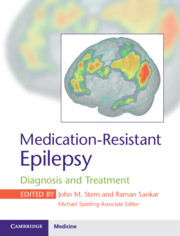45 results
4 Evaluating Plasma GFAP for the Detection of Alzheimer’s Disease Dementia
-
- Journal:
- Journal of the International Neuropsychological Society / Volume 29 / Issue s1 / November 2023
- Published online by Cambridge University Press:
- 21 December 2023, pp. 408-409
-
- Article
-
- You have access
- Export citation
6 Association Between American Football Play and Parkinson's Disease: Analysis of the Fox Insight Data Set
-
- Journal:
- Journal of the International Neuropsychological Society / Volume 29 / Issue s1 / November 2023
- Published online by Cambridge University Press:
- 21 December 2023, pp. 415-416
-
- Article
-
- You have access
- Export citation
64 Neuroimaging Evidence of Neurodegenerative Disease in Former Professional American Football Players Who “Fail” Validity Testing: A Case Series
-
- Journal:
- Journal of the International Neuropsychological Society / Volume 29 / Issue s1 / November 2023
- Published online by Cambridge University Press:
- 21 December 2023, pp. 574-575
-
- Article
-
- You have access
- Export citation
4 Risk Factor and Biomarker Correlates of FLAIR White Matter Hyperintensities in Former American Football Players
-
- Journal:
- Journal of the International Neuropsychological Society / Volume 29 / Issue s1 / November 2023
- Published online by Cambridge University Press:
- 21 December 2023, pp. 608-610
-
- Article
-
- You have access
- Export citation
5 Antemortem Plasma GFAP Predicts Alzheimer’s Disease Neuropathological Changes
-
- Journal:
- Journal of the International Neuropsychological Society / Volume 29 / Issue s1 / November 2023
- Published online by Cambridge University Press:
- 21 December 2023, pp. 409-410
-
- Article
-
- You have access
- Export citation
59 Objectively-Measured Performance on Tests of Episodic Memory and Executive Function in Autopsy-Confirmed Chronic Traumatic Encephalopathy
-
- Journal:
- Journal of the International Neuropsychological Society / Volume 29 / Issue s1 / November 2023
- Published online by Cambridge University Press:
- 21 December 2023, pp. 264-265
-
- Article
-
- You have access
- Export citation
Chapter 12 - Care of Vulnerable Elders
-
-
- Book:
- Urban Emergency Medicine
- Published online:
- 20 July 2023
- Print publication:
- 03 August 2023, pp 148-160
-
- Chapter
- Export citation
Electronic surveillance criteria for non–ventilator-associated hospital-acquired pneumonia: Assessment of reliability and validity
-
- Journal:
- Infection Control & Hospital Epidemiology / Volume 44 / Issue 11 / November 2023
- Published online by Cambridge University Press:
- 15 March 2023, pp. 1769-1775
- Print publication:
- November 2023
-
- Article
- Export citation
Chapter 21 - Substance Use Disorder
- from Section III - Care of the Elderly by Organ System
-
-
- Book:
- Reichel's Care of the Elderly
- Published online:
- 30 June 2022
- Print publication:
- 21 July 2022, pp 256-269
-
- Chapter
- Export citation
Sustaining University Operations During the COVID-19 Pandemic
-
- Journal:
- Disaster Medicine and Public Health Preparedness / Volume 16 / Issue 5 / October 2022
- Published online by Cambridge University Press:
- 08 March 2021, pp. 1901-1909
-
- Article
- Export citation
Contributors
-
- Book:
- Medication-Resistant Epilepsy
- Published online:
- 20 August 2020
- Print publication:
- 10 September 2020, pp ix-xii
-
- Chapter
- Export citation
Chapter 20 - Stimulation Treatment for Medication-Resistant Epilepsy
-
- Book:
- Medication-Resistant Epilepsy
- Published online:
- 20 August 2020
- Print publication:
- 10 September 2020, pp 219-240
-
- Chapter
- Export citation
Dedication
-
- Book:
- Medication-Resistant Epilepsy
- Published online:
- 20 August 2020
- Print publication:
- 10 September 2020, pp v-vi
-
- Chapter
- Export citation
Index
-
- Book:
- Medication-Resistant Epilepsy
- Published online:
- 20 August 2020
- Print publication:
- 10 September 2020, pp 269-274
-
- Chapter
- Export citation
Contents
-
- Book:
- Medication-Resistant Epilepsy
- Published online:
- 20 August 2020
- Print publication:
- 10 September 2020, pp vii-viii
-
- Chapter
- Export citation
Copyright page
-
- Book:
- Medication-Resistant Epilepsy
- Published online:
- 20 August 2020
- Print publication:
- 10 September 2020, pp iv-iv
-
- Chapter
- Export citation

Medication-Resistant Epilepsy
- Diagnosis and Treatment
-
- Published online:
- 20 August 2020
- Print publication:
- 10 September 2020
Chapter 46 - Well-Being and Work–Life Balance
- from Part V - Wellness through Optimization of Work, Love, and Play
-
-
- Book:
- The Handbook of Wellness Medicine
- Published online:
- 18 September 2020
- Print publication:
- 20 August 2020, pp 545-552
-
- Chapter
- Export citation
5 - Diamonds and the Mantle Geodynamics of Carbon
-
-
- Book:
- Deep Carbon
- Published online:
- 03 October 2019
- Print publication:
- 17 October 2019, pp 89-128
-
- Chapter
-
- You have access
- Open access
- HTML
- Export citation
Simulation-based research in emergency medicine in Canada: Priorities and perspectives
-
- Journal:
- Canadian Journal of Emergency Medicine / Volume 22 / Issue 1 / January 2020
- Published online by Cambridge University Press:
- 26 September 2019, pp. 103-111
- Print publication:
- January 2020
-
- Article
-
- You have access
- HTML
- Export citation



